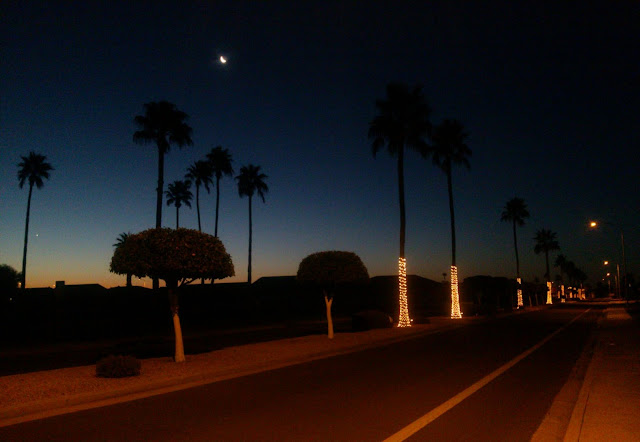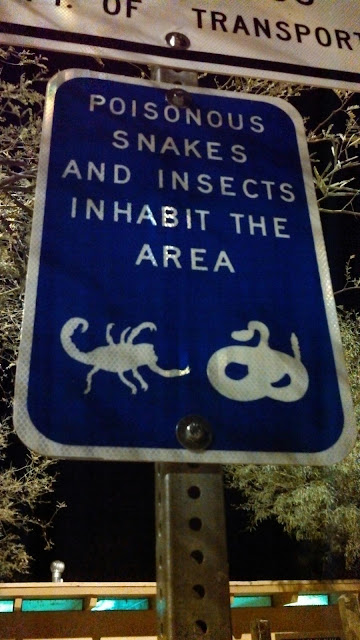Friday, June 28, 2013
Cascadian Summer
Sunday, May 12, 2013
Data from the Trip
Temperature: 2 24-hour periods had temperatures of nearly -10C : 12/13 & 12/23. 15 24-hour periods had temperatures at or below freezing. The highest low temperature was on 12/26, while the bikes stayed in the hotel room in Las Vegas on our rest day. One other pre-2013 peak stands out: 12/17. This was our rest day in McDermitt. After arriving in Phoenix on 1/1, the bikes stayed in the garage at night and didn't see temperatures below 10C.
Light: Before arriving in Phoenix on 1/1, two days show maximum daily light intensities of 0, 12/17 & 12/26. These are the two days we did not ride.
Sunday, March 10, 2013
Spring Solo Multnomah Falls; weekend refresher
With a weekend forecast of solid sun followed by continuous rain, I decided it was a good time to make a break for the woods to break out of the city-grid for just a bit.
34 miles in 3 hours. Let's say I used 1500 Calories (hard to say how much I actually used, but this is in the middle-range of the numbers given by those "calories burned" calculators, like here). Imagine a car that gets 34 miles to the gallon. One gallon of gas contains 35,000 Calories (just for fun, a pound of fat has 3500 -- an order of magnitude less!). So, had I driven I would have used 23 times as much energy (35000/1500) and had .0001 as much fun. What else to expect from bringing along 1 to 2 tons of extra weight? For more, see this
When leaving for Phoenix, we took this same route. Somewhere near Corbett we stopped to admire a vast expanse of Brassica - now they are nice roundy cabbages!
I flew up to Vista House in what must have been record time and with relative ease - a far, far cry from the first time I made this trip - Crown Point highway just doesn't take my breath away like it used to! (note: view has not depreciated)
Step-moss is the best moss! (by some accounts) - A geranium-looking thing was shooting up everywhere - And Peppercress! That must have come in on someone's shoe?
| Somebody count the rings-- Take that number plus how long ago this hemlock-octopus was cut (50?) plus time since nurse tree death (to attain proper rot - 200?) plus age of nurse tree when it died (600?) = years ago that big tree sprouted. |
Thursday, January 17, 2013
Chapter Three: Global Warming and Virtues of Ecological Restoration. Ronald Sandler
Global warming will increase both the unpredictability and the rate of ecological change, exacerbating the information deficit that already exists in restoration work. The author describes this well by saying "our ecological future is accelerating away from our ecological past with increasing rapdity, and [that] it is increasingly unclear where it is going" (p.64). Given this increased complexity, what character traits are most valuable in ecological practices?
The author identifies openness, accomodation, patience, restraint, humility, and reconciliation as important virtues. Promoting a less controlling and more hands-off approach to restoration, the author believes these traits are virtues due to the unpredictability of systems under a changing climate:
"In an age marked by amplified ecological uncertainty, technologies that are more control orientied are likely to be less successful than those that are not, and technologies that are more interventionist into complex ecological systems are likely to be less successful and have greater unanticipated effects than those that are not. This is a straightforward function of complexity and uncertainty in dynamic and integrated systems" (p.71).
The author also argues for the decreased importance of historical fidelity, or the attempt to make the system that is the object of an ecological restoration match what it has been at some time in the past (pre-disturbance). If the abiotic conditions in a particular place have changed, or will change, then an attempt to cultivate a species assemblage that thrived under that lost past may be doomed from the start.
Sunday, January 13, 2013
Last Leg
Arriving in Maricopa, I quickly found the train station, bought a bike box, and packed up my gear. The bike box was so big I needed only to remove my pedals and handlebars (hanging by the brake and shifter cables), leaving the wheels on so I could actually roll the bike into the box and tape the flaps shut behind. The attendant took the box unceremoniously, and I wasn't sure whether to yell "goodbye!!!" to its retreating form, or plead with the attendant and make him promise to be careful. Hanging on to appearances and composure I did neither, instead turning to pursue the next item on the agenda -- could this finally be the town where I would find cricket tacos?
Walking up the main strip confirmed what riding down it an hour before had decided - No, no it would not. The town seemed to have been built yesterday, constructed entirely of pre-fabricated Standard American Boxes. Was this section of Earth really just a blank slate for Jack in the Box Carl's Jr McDonald's Basha's Subway Fry's Carwash Carlot Parking Lot? Apparently so, although the jagged and dark peaks on the near horizon hinted at something else.
After finding a reasonable burrito at a cheap price and devouring it on a sunny sidewalk, I stopped at the grocery store to search out snacks for the nearly 48 hour train ride. That is where I met "extreme butter hull-less popcorn". This product contained neither butter nor popcorn, but it cost only one dollar. Morbid fascination urged it into my hand, and the 14 grams of fat per serving from unspecified vegetable oils almost had their way with me, but in the end I begged the checkout guy to take it away. The mystery of oily cornmeal posing as buttery popcorn couldn't have been anything but a monstrosity.
Walking back to the train station a nagging desire chewed at the edges of my mind - what did it want? Coffee, chocolate? a house made from adobe and Saguaro? Biosphere 2 (a visit that will have to wait for cycle tour Arizona, round two)? No matter - thoughts of sinking deep into a window seat on a northbound train, and the phantom cyclists that had been following me since the Gorge finally being real again, trumped all. Homeward bound!
Thursday, January 3, 2013
The Actual Route
View Larger Map
MVPs of the Road
Alcohol Stove - small, lightweight, and virtually unbreakable. Fuel for this stove can be bought at most gas stations in the form of HEET, a cold-weather gasoline additive that is mostly methyl alcohol. Isopropyl alcohol and denatured ethanol also work.
The Sleeve - a soft scrap from an alpaca sweater. A last minute addition to Kevin's gear, this tight-woven piece of cloth became a balaclava for cold-weather protection.
Sunglasses - sun, snow, blowing sand, and wind protection. If you forget yours, just keep your eyes searching the shoulder and you may soon find a free pair, as Kevin did.
Silk Liners - sewn from old garments (found at Goodwill), silk adds lots of warmth without a lot of weight or bulk. Along with ~35 degree F down bags, mylar "emergency" blankets, tyvek bivy sacks, and closed-cell foam ground mats, hand-sewn silk liners played a big role in keeping our bedrolls both warm and packable.
Thin gloves - despite daytime temperatures below freezing, these minimalist gloves performed better than their technical cousins could have. Wind protection plus breathability keeps hands comfortable and dexterous while exercising in cold weather.
The Mar of The Car
Wickenburg, 56 miles from Phoenix, for the final boost to our destination. Meeting Jim and Lois at a Shell station, we creatively strapped our bikes to the top of the vehicle, ate Mexican food, and were transported into the winter-time weather paradise of suburban Phoenix, AZ.









































